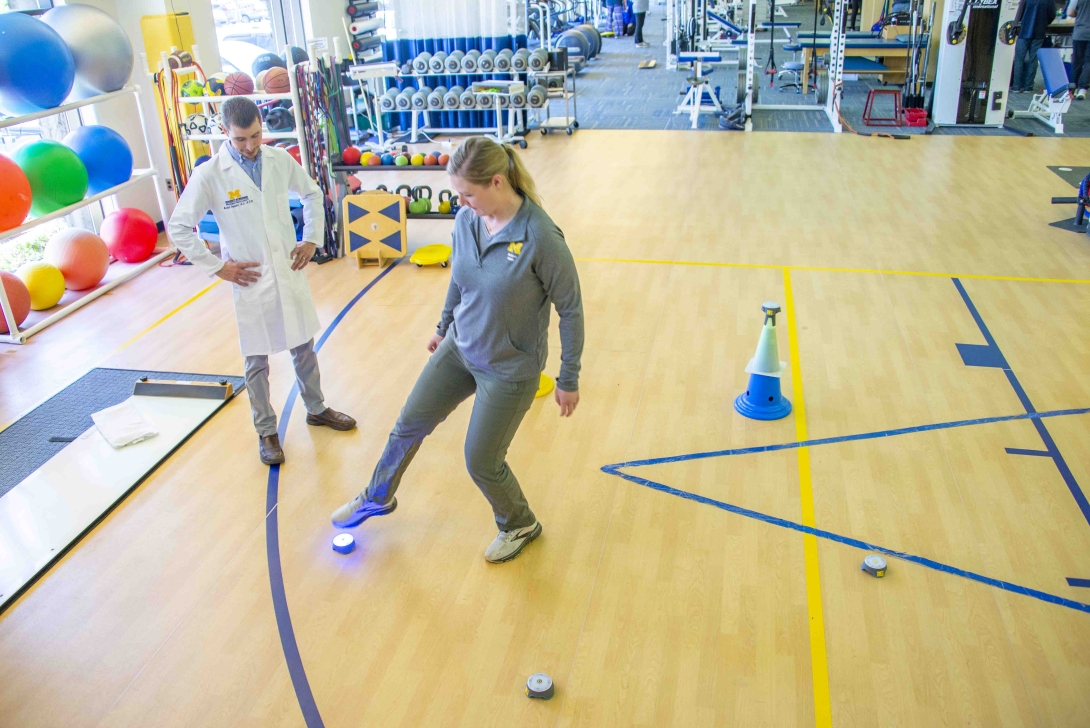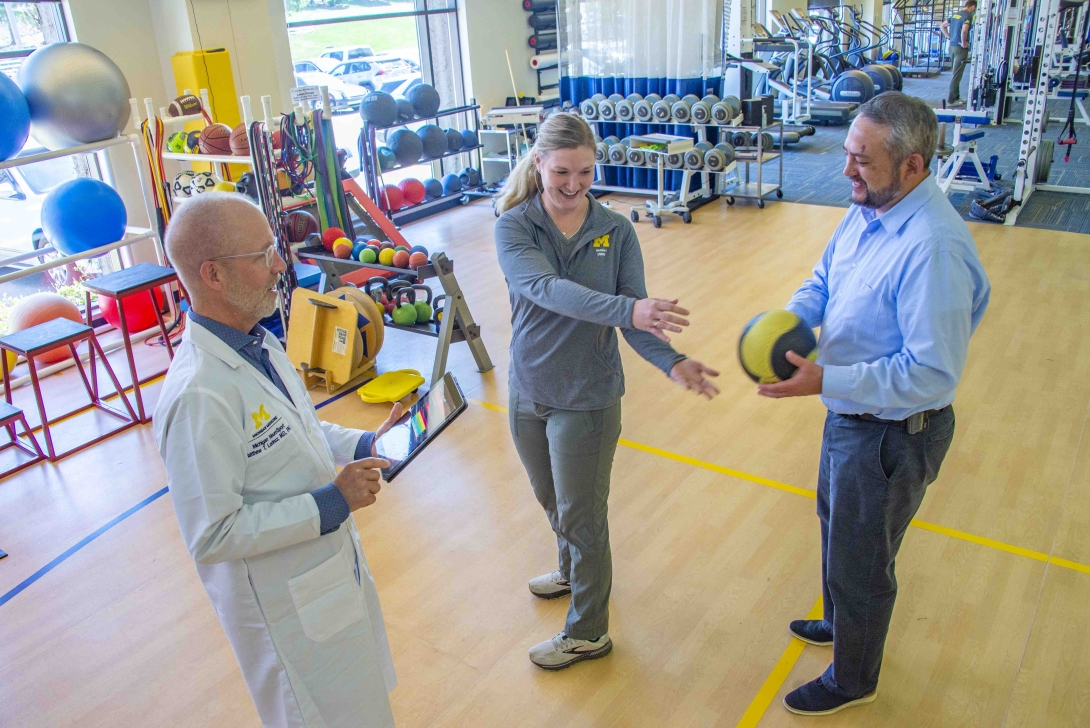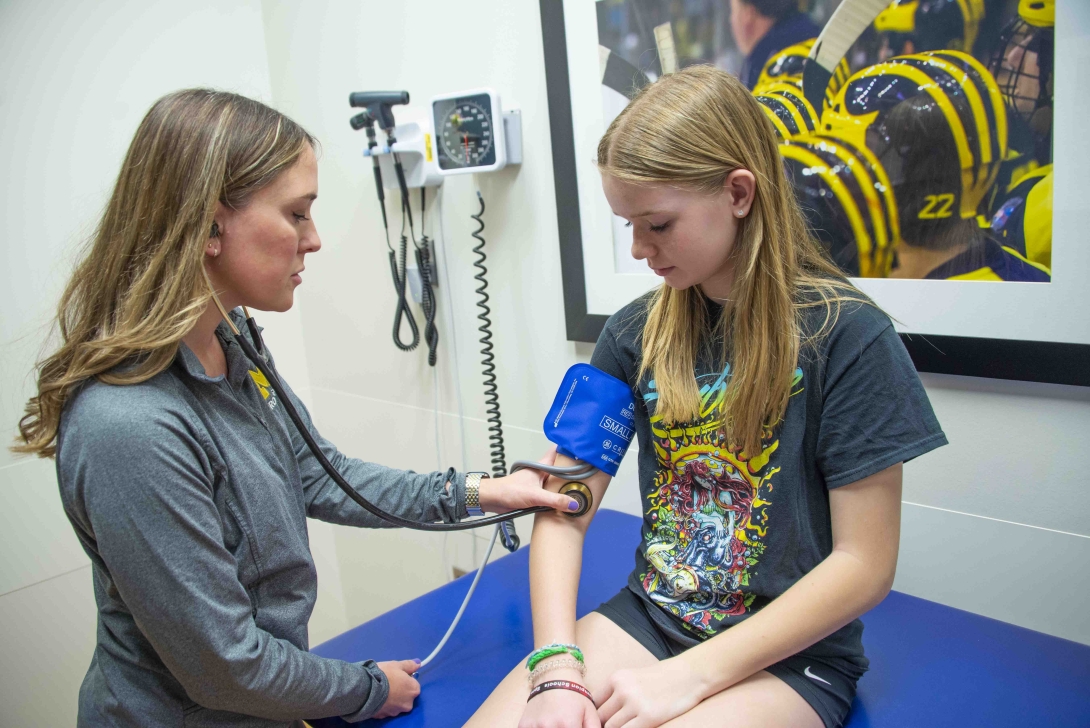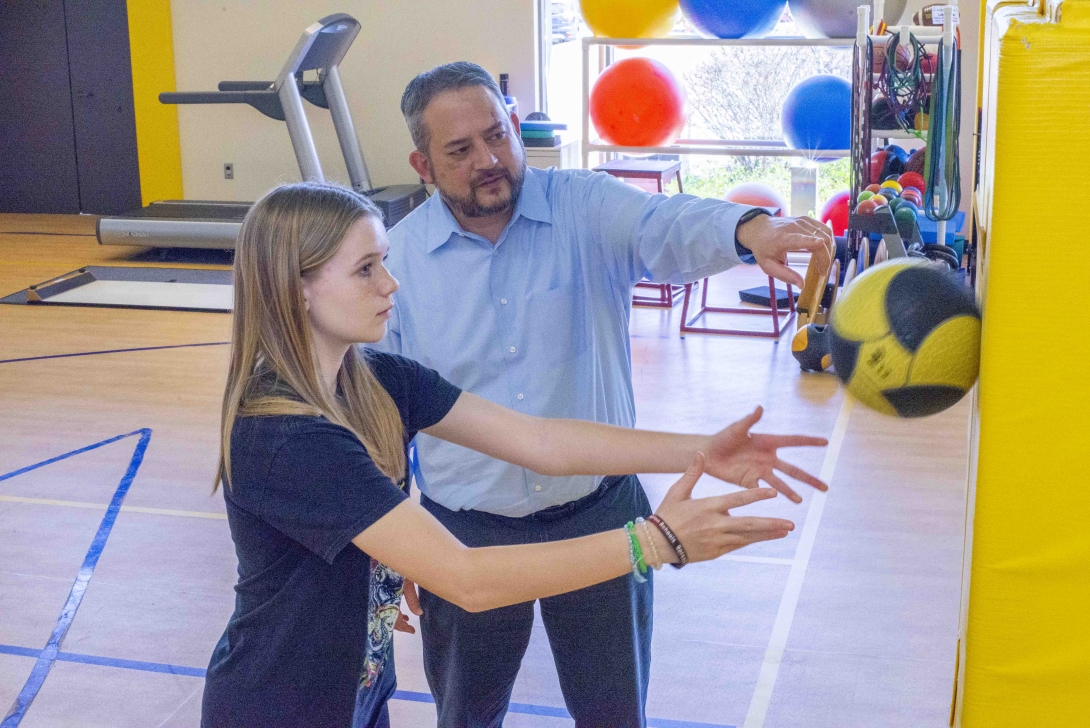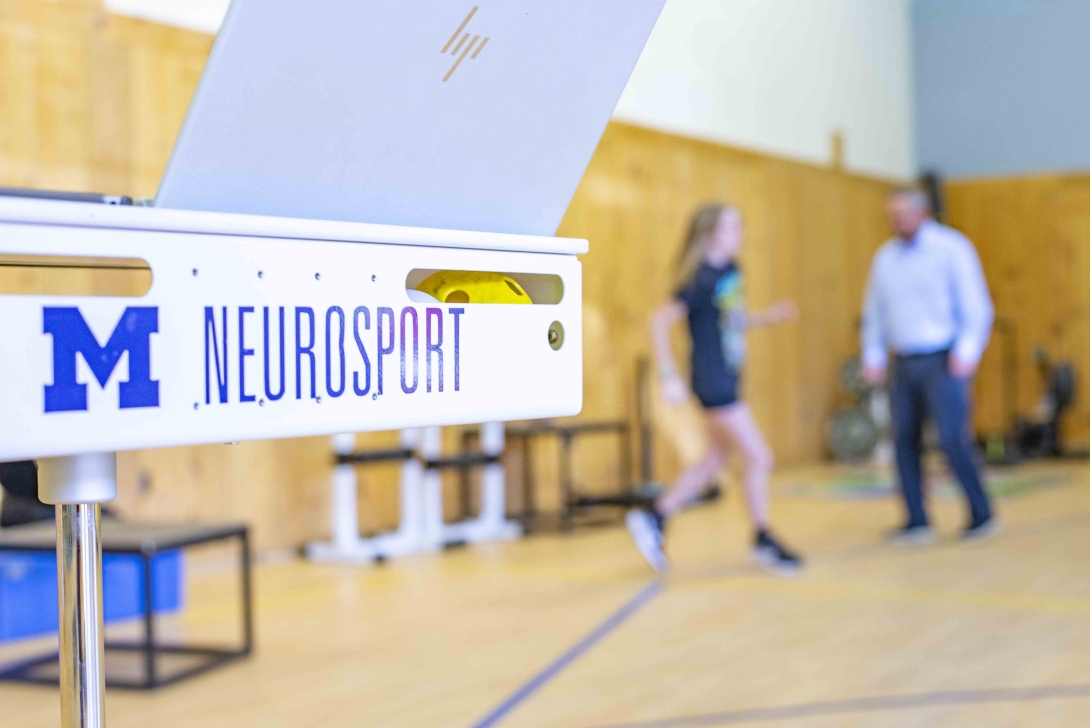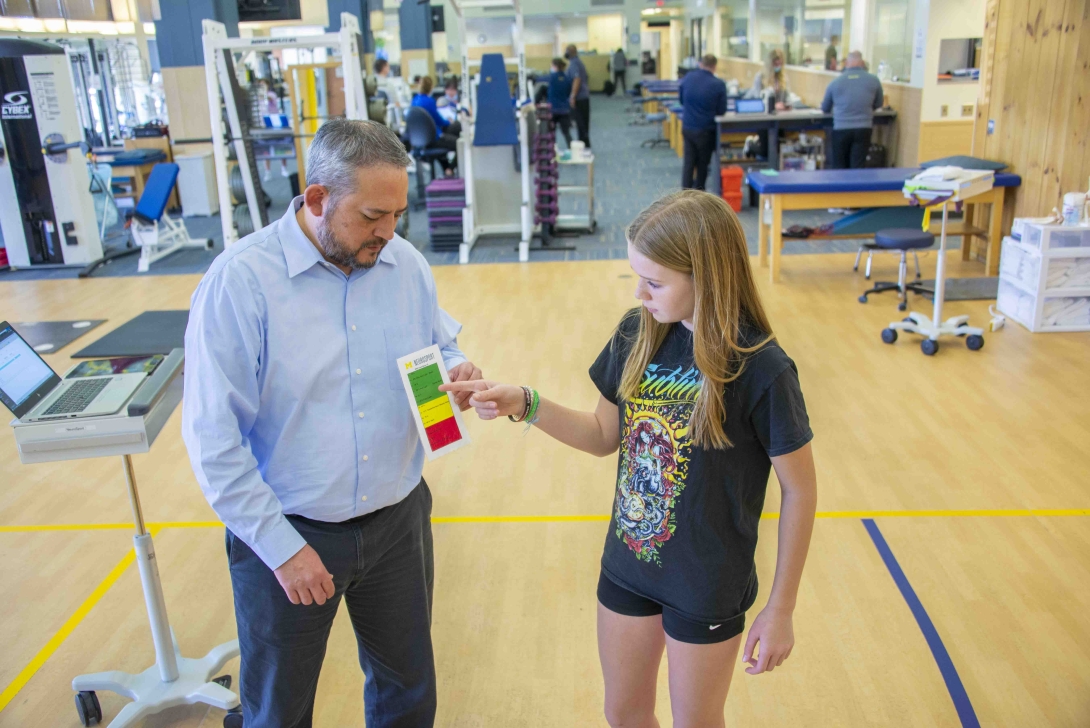-
Ataxia Program -
Cognitive Disorders Program -
Comprehensive Epilepsy Program -
Health Services Research Program -
Movement Disorders Program -
Multiple Sclerosis & Clinical Neuroimmunology Research Program -
NeCTO Program -
Neuromuscular Diseases & ALS Program -
Neuro-Oncology Program -
NeuroSport -
Sleep Medicine Program -
Stroke Program
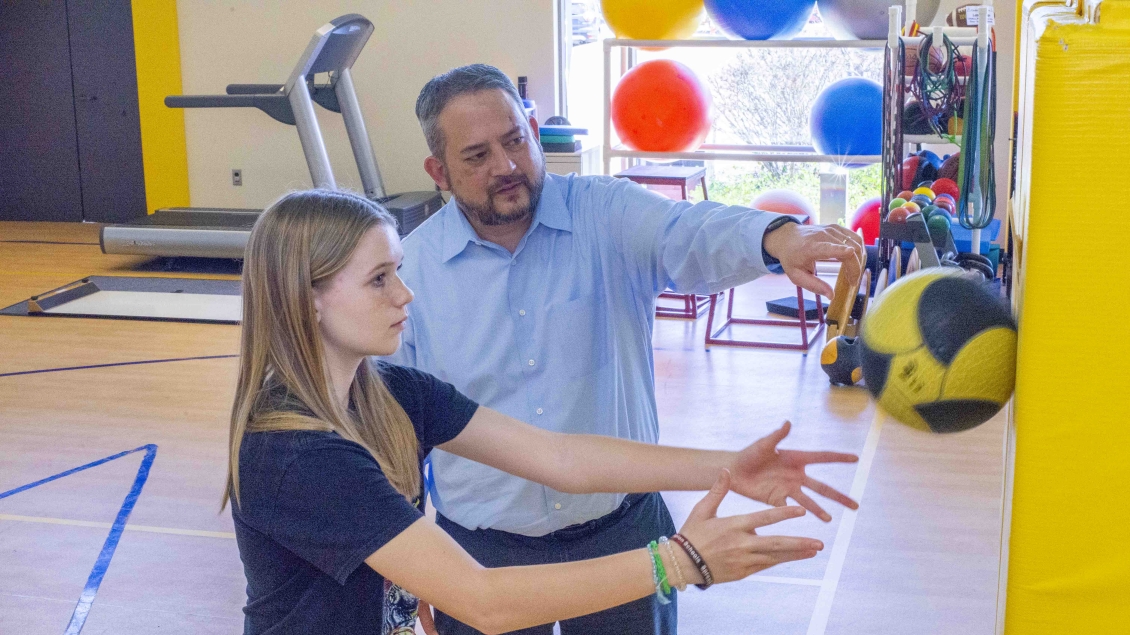
The NeuroSport Research Program at the University of Michigan Medical School focuses on concussion, or mild traumatic brain injury.
Concussion has received increased recognition and concern among clinicians, researchers, military personnel, sporting organizations, athletes and parents, and the general population. It is now a major public health concern facing the medical community and society at large in the United States and worldwide.
In many ways, concussion research is in its infancy relative to moderate and severe brain injury with substantial gaps in our fundamental understanding of injury prevention, pathophysiology, diagnostics, management, outcomes and financial impact.
The overall mission of Michigan NeuroSport is fueled by our research which focuses on discovering optimal care for acute concussion as well as understanding and preventing long-term complications of mild head trauma. Michigan NeuroSport is partnering with the Michigan Concussion Center to undertake cutting concussion research. The mission of our research program is to undertake research that will answer fundamental questions on concussion prevention, identification, diagnosis, management and long-term outcomes and provide the necessary infrastructure to advance concussion knowledge and health care.
The CARE Consortium offers the promise of a large-scale, multi-site study of the natural history of concussion in both sexes and multiple sports, that will address the current gaps in our knowledge, and shed light on the neurobiological mechanisms of concussion symptoms and trajectory of recovery.
The CARE Consortium is a 30-site investigation enrolling approximately 25,000 military service academy cadets and university student athletes, and capturing 1200 concussions. Participants will receive a comprehensive preseason evaluation for concussion and will be monitored in the event of an injury.
The objective of this study is to determine the accuracy of blood biomarkers for diagnosing sports-related concussion and for predicting the duration of post-concussive symptoms. We are enrolling matriculated student athletes at the University of Michigan and at Eastern Michigan University. Pre-season blood samples will be obtained from all athletes participating in high risk contact sports and from control athletes participating in non-contact sports.
Additionally, in concussed athletes, blood samples will be obtained after a concussion event. Samples will also be obtained in concussed athletes at 24 to 48 hours after injury and at 2 weeks post-injury. Additionally, blood samples will be obtained from contact-sports athletes without concussion (contact-sports controls) after a game and at 24-48 hours and 2 weeks after the initial draw. Similarly, blood samples will be obtained from athletes participating in non-contact sports (non-contact sport controls) after a game and at 24-48 hours and 2 weeks (+/-3 days) after the initial draw. Blood biomarkers of brain injury will be measured in these samples.
Concussed athletes will be examined for resolution of symptoms and return to play. Data from this study will be used to determine the accuracy of blood biomarkers for diagnosing concussion and for predicting the duration of post-concussive symptoms.
The purpose of this study is to examine the effect of early vestibular rehabilitation on reducing dizziness, improving balance, and improving the timeline to achieve medical clearance to return to activities such as sports and work activities, when compared to standard care. The findings of this study are expected to provide medical and sports related professionals with appropriate concussion treatment strategies and improve outcomes of patients suffering from concussion.
This proposal aims to carefully evaluate Quantitative pupillometry (QP) as a potential diagnostic tool to identify brain dysfunction associated with mTBI. Quantitative pupillometry (QP) is the precise measurement of eye pupil characteristics using a dedicated device known as a pupillometer. A pupillometer delivers a light stimulus to the eye and tracks how pupil size changes in response.
The results of this study will provide substantial normative data, will identify differences in QP between acutely concussed athletes and control athletes, and will correlate high-acceleration hits with QP.
The objective of this study is to determine if there is an orthostatic vitals signature that is unique to acute concussion that would help with the diagnosis of concussion. Our working hypothesis is that the CNS metabolic changes after concussion alter the autonomic control of heart rate in patients with acute concussion. This change in regulation can be detected as a positive finding on standard orthostatic testing after concussion.
The purpose of this study is to evaluate efficacy and feasibility of using two-page, gender-neutral comic handout and brief patient education video to improve patients’ concussion knowledge. The aims of this study were to determine the more informative and preferred modality of education; to determine if either modality increased patient and/or caregiver’s knowledge about concussion; and to determine perceived barriers to recovery.
The aim of this study is to quantify success in safely returning athletes to sport following evaluation in the NeuroSport outpatient clinic and completion of a graded return to play process. The aim will be accomplished by retrospectively identifying patients who were cleared for sport participation in the NeuroSport clinic and accessing the frequency at which they were able to return to sport without return of symptoms within 2 weeks of completing the return to play to progression. Return to sport without symptoms within two weeks will be determined by self/parent report by phone survey.
The objective of this study is to determine if guided sub-symptomatic threshold physical exertion hastens recovery from sports-related concussion. This is a retrospective chart review of SRC patients from September 2016 through January 2017. Patients who underwent controlled physical exertion while symptomatic within 15 days of their concussion were included in the intervention group. Those who did not undergo this testing, were asymptomatic at time of testing, or who underwent testing after 15 days from their concussion were included in the non-intervention group.
The objective of this study is to determine if baseline concussion symptoms scores in athletes prior to the start of their season vary by gender, sport, or level of play. Concussion is a clinical diagnosis that includes an appropriate clinical scenario, reporting of symptoms through a post-concussion symptom score list, and an objective neurologic exam. Symptom reporting is considered when determining if an athlete has recovered from their concussion.
Recent studies have shown that athletes at baseline can report symptoms at a rate high enough to meet criteria for post-concussion syndrome without any history of concussion. A goal of this study is to determine factors that lead to differences among symptom reporting in distinct athlete populations to aid in clinical decision making.

